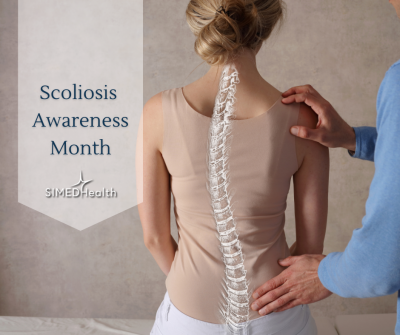
“Scoliosis affects 6 to 9 million people in the United States”, according to the National Scoliosis Foundation. June is Scoliosis Awareness Month, and we interviewed Physical Medicine and Rehabilitation Physician Jesse Lipnick, MD, about scoliosis and its treatments.
What is scoliosis?
Scoliosis is a rotary disease of the spine, meaning parts of the spine rotates in multiple ways to cause curves in the spine. These curves rotate in regard to one another, developing a primary and secondary curve that take on an “S” shape.
What are some of the signs and symptoms of scoliosis?
- Back Pain
- Radiating pain from pinched nerves
- Change in posture
- “Humpback”
- Rotated or uneven pelvis
- Premature arthritis
- Interference with other organs
What is the treatment process for scoliosis?
Scoliosis can be painful, but there are treatments that can ease pain. Treatments depend on the type of scoliosis a patient suffers from. The most common type is idiopathic, a scoliosis that develops during adolescence and if progressing, the child is fitted with a back brace. When one is born with scoliosis, it’s called congenital scoliosis. Congenital scoliosis is a rare type that is usually fixed with surgery. Physical therapy is commonly recommended for all types of scoliosis as it important to strengthen the core muscles. Degenerative scoliosis can develop in adults due to arthritic changes in the joints of the spine and can be accompanied by severe pain. Medications that numb nerves and block joint pain are additional forms of treatment from which many have experienced positive results.
Living with scoliosis:
People with scoliosis can suffer with pain daily. Scoliosis can not only affect a person’s physical health but also their emotional health. Suffering from scoliosis can make it difficult to sleep, sit in a chair, work at a desk, find clothes that fit, and the self-perceived unpleasant appearance may impact one’s self-confidence. Advances in medication, interventional procedures and if necessary surgery can help manage scoliosis, allowing one to take back control over their life.